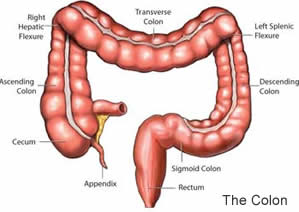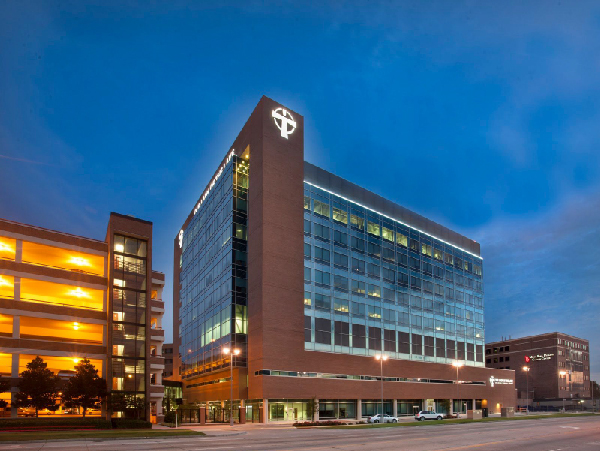
Laparoscopic Colon Resection
What is the colon?
 The colon (large intestine) is a tube that forms the last part of the digestive tract. It is about 4 to 6 feet long. When food is swallowed, it begins digestion in the stomach, and empties into the small intestine, which absorbs the nutrition of the food. The waste then empties into the colon where it is held until it is ready to be expelled by the rectum.
The colon (large intestine) is a tube that forms the last part of the digestive tract. It is about 4 to 6 feet long. When food is swallowed, it begins digestion in the stomach, and empties into the small intestine, which absorbs the nutrition of the food. The waste then empties into the colon where it is held until it is ready to be expelled by the rectum.
Sometimes, the colon can develop polyps (abnormal growths), infection, inflammation or even cancer.
Diagnosis:
Diagnosis of abnormalities can include symptoms, a colonoscopy by your gastroenterologist, and CT scan.
Treatment:
Treatment requires removal of part or all of the colon where the abnormality exists. Four small incision sites are made on your abdomen. The surgeon inflates your abdomen with a harmless gas which allows him a clear view of the organs within your abdomen. After careful exposure and detachment, the abnormal part of the colon is removed from another small incision. The surgeon then reattaches the two healthy ends left using staples or suture. This procedure allows for passage of food and release of waste by normal methods.
In certain circumstances, these two parts may not be reattached. This could be temporary or permanent. One end of the intestine is used to make an opening on the abdomen. This opening, or stoma, will be the path that waste from your body is now passed.



